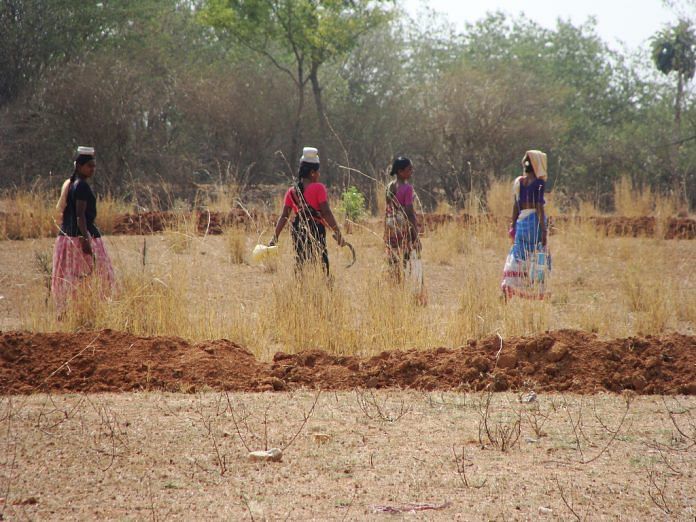The RBI report blames the relative underperformance of rural employment scheme MGNREGS as one of the main factors behind the slow growth in rural wages.
New Delhi: Rural India’s wages have taken a significant fall since 2014, when the Modi government assumed office, and agricultural workers have been hit particularly hard, according to an RBI analysis released Wednesday.
According to an RBI working paper titled ‘Rural Wage Dynamics in India: What Role Does Inflation Play?’ price rise took a heavy toll on the purchasing power of wages in India’s villages, throwing their growth into “negative territory” occasionally.
“This phase (post November 2014) is also characterised by low inflation occasionally surpassing growth in nominal rural wages, pushing real wage growth to the negative territory,” the report adds.
It points to the uptick in rural wages between 2007-08 and 2012-13, and notes that it occurred despite “elevated inflation”. Two factors are cited for this — implementation of the rural employment scheme MGNREGS and a healthy growth in the construction sector; factors that, the paper claims, have weakened in significance since.
Impact of MGNREGS
The report points out that though the phase after 2014 has been labelled a period of rural distress, the gap between average growth in rural wages and rural inflation is not so significant — while rural inflation was recorded at 4 per cent, the growth rates in nominal agricultural and non-agricultural wages averaged at 5.6 per cent and 6.5 per cent, respectively.
It says that since 2014, the relative underperformance of MGNREGS has been one of the main factors behind the slow growth in rural wages.
“MGNREGS, which was a driving factor (of growth in rural wages) during 2008-09 to 2011-12, seemed to have lost momentum in the recent years,” the paper said.
Under MGNREGS, the average number of employment days per household annually has generally been between 40 and 50, though the promise is for 100.
The average number of person-days for each household employed under MGNREGS fell during this period, as did the number of households getting 100 work days a year.
“MGNREGS wage growth also witnessed some moderation in the recent years, which could partly be due to indexation of wages to inflation and partly because of issues related to wage-fixation policies of the government,” the report added.
The other factors at play
According to the report, a host of other factors have been cited for the dampened growth of rural wages, “including the global slowdown in growth, collapse of international primary commodity prices and major contraction in food prices… most of which began around 2013-14”.
“Domestically, the economy suffered two consecutive droughts in 2014-15 and 2015-16. Growth in agricultural GDP slackened,” the RBI paper added.
Also, the construction sector, which boomed during 2000-2012 and was the major driver of rural non-farm employment, slowed significantly in the period concerned.
The report adds, “Also, 2014-15 and 2015-16 were subnormal monsoon years with weaker growth in agricultural GDP. The rural economy witnessed some revival in 2016-17 as monsoon turned normal…it did not provide a significant boost to the agricultural wages.”
Modi’s rural push found wanting?
The empowerment of rural India has been among the main promises of the Modi government, which has introduced several initiatives to this end, including Jan Dhan (to get every resident on the banking network), Ujjwala (to ensure an LPG connection for every household), the Saansad Adarsh Gram Yojana (where every MP adopts a village for its development), and the PM Fasal Bima Yojana (for crop insurance).
There’s Swachh Bharat, with its push for the construction of toilets, and PM Awaas Yojana (Grameen), which has notched completion figures that are nearly twice its predecessor’s.
The crux of this push has been the belief that India’s development has to start from its villages.
However, a year before the 2019 general elections, there have been several reports of disenchantment with his government in the hinterland, with the opposition painting it as an administration that priorities business interests over farmers’.
Just recently, thousands of farmers marched to Mumbai seeking a loan waiver and the implementation of Swaminathan Commission recommendations, forcing the BJP-led Maharashtra government to give in.
In last year’s Gujarat’s polls, the BJP performed poorly in rural areas, pushing the party’s central government to renew its commitment to the rural economy.



